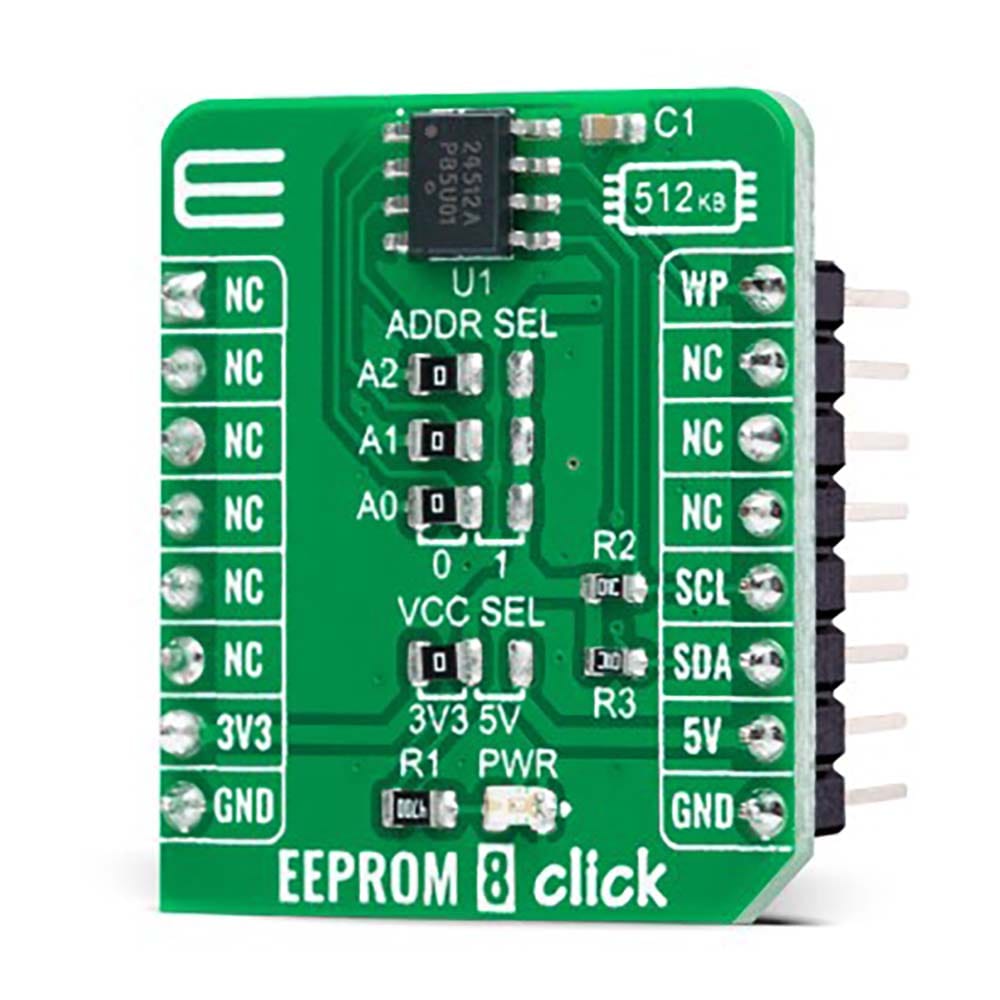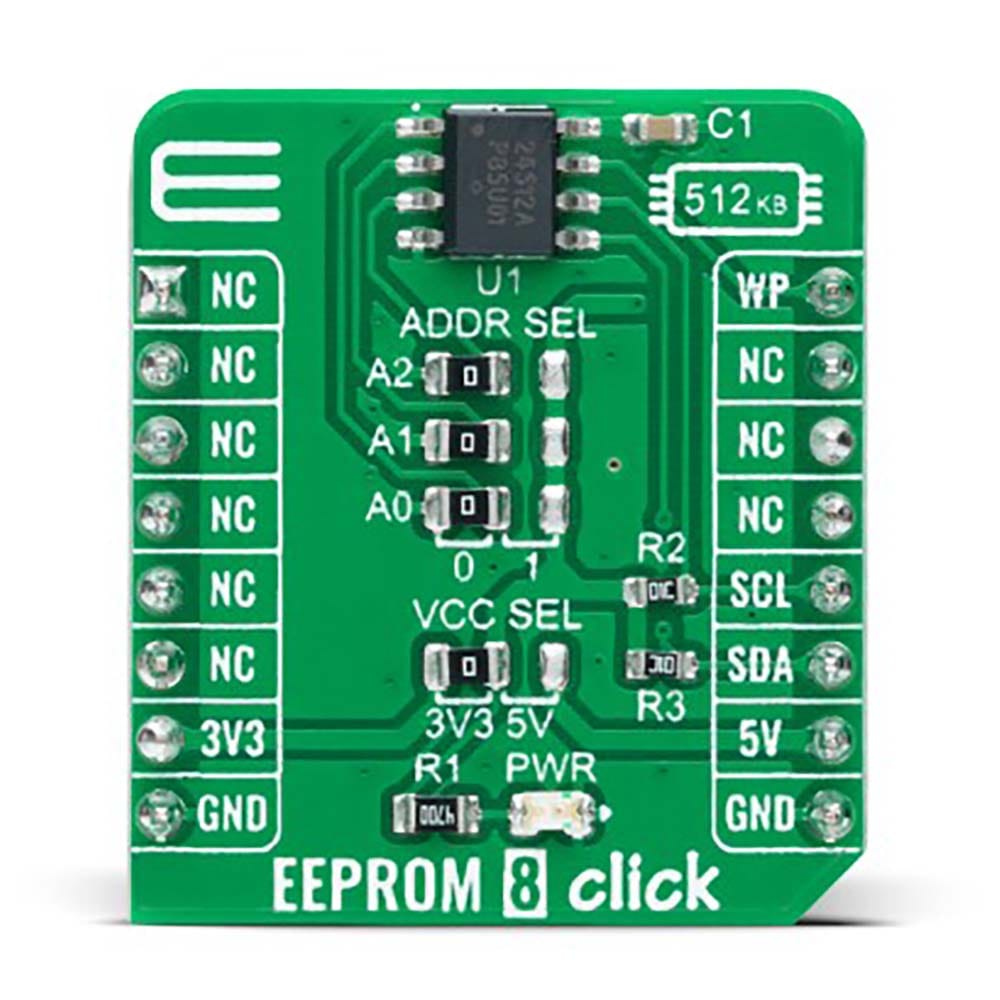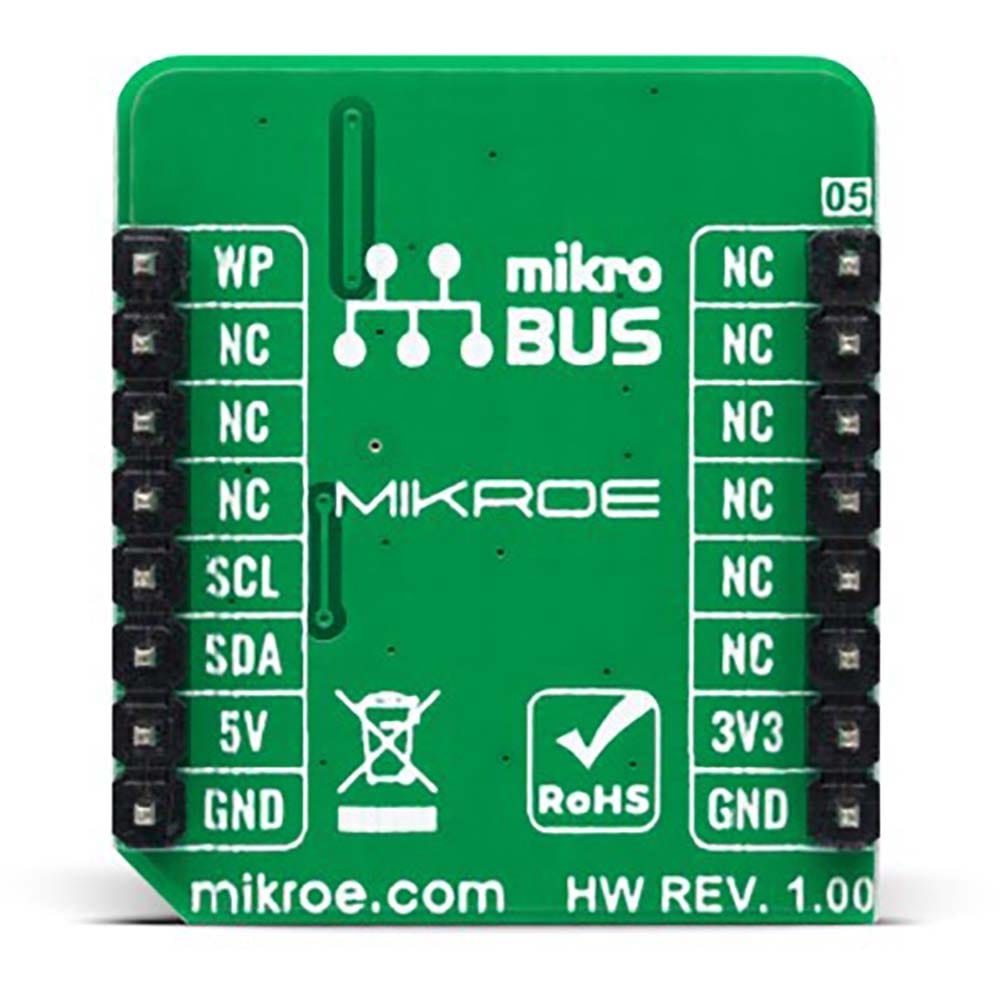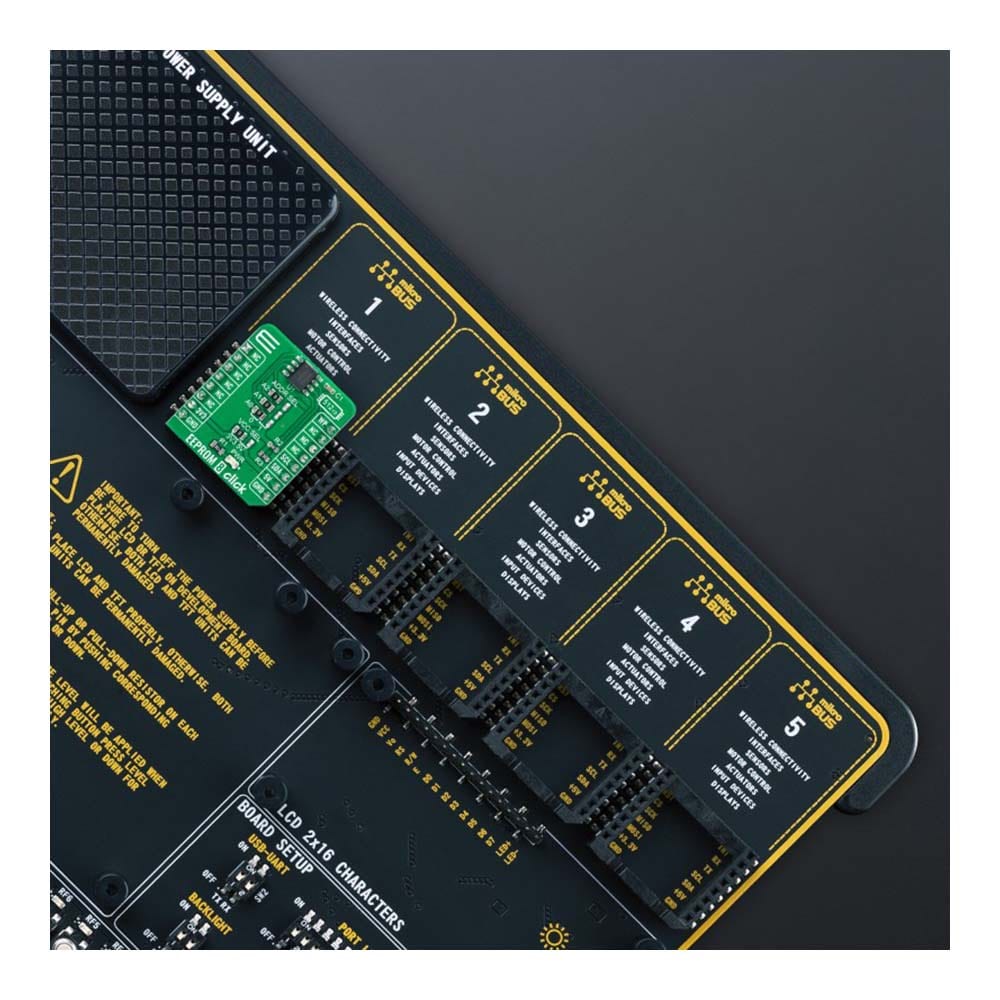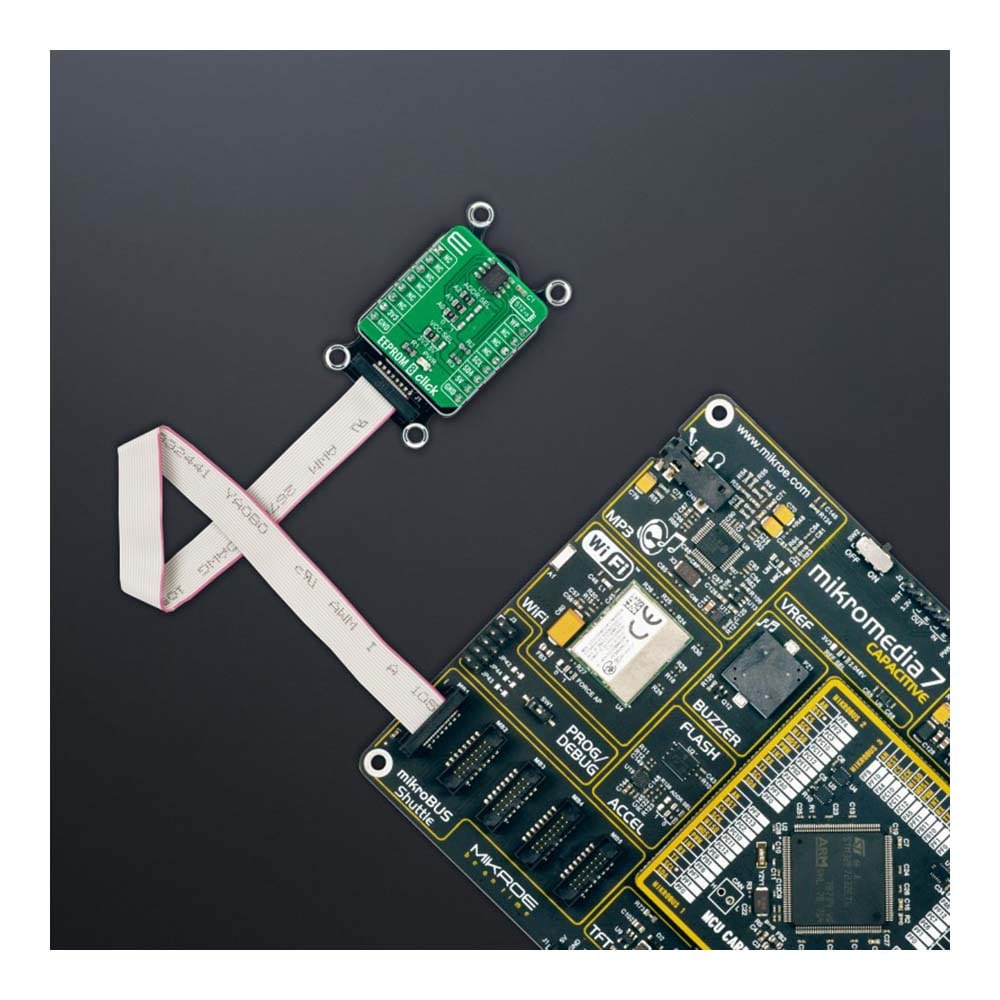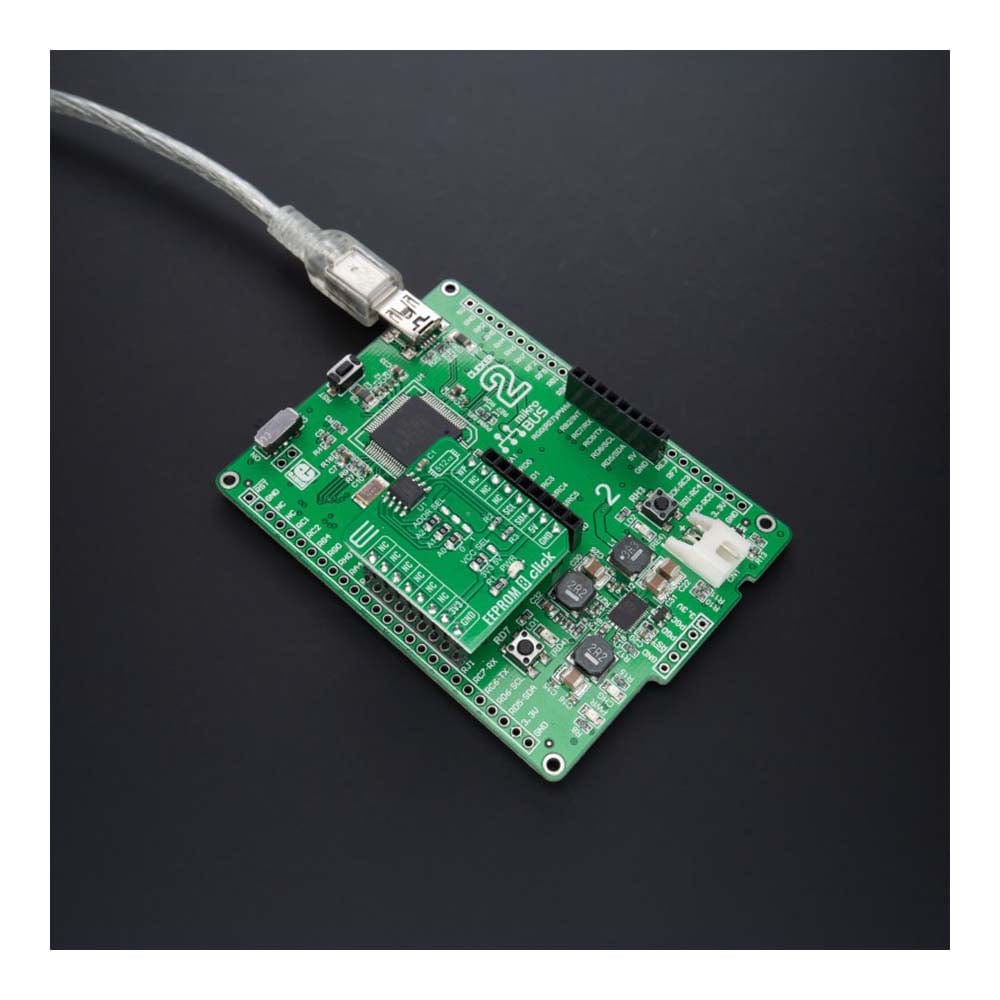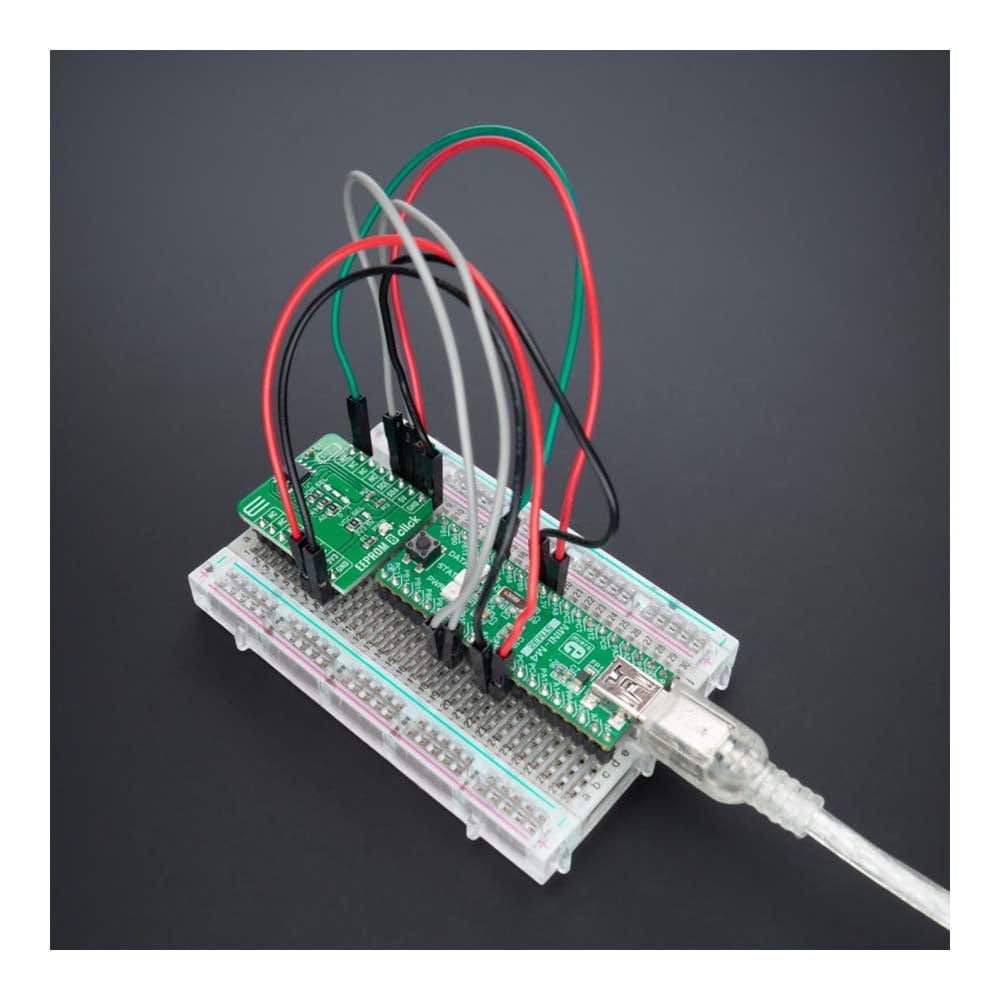
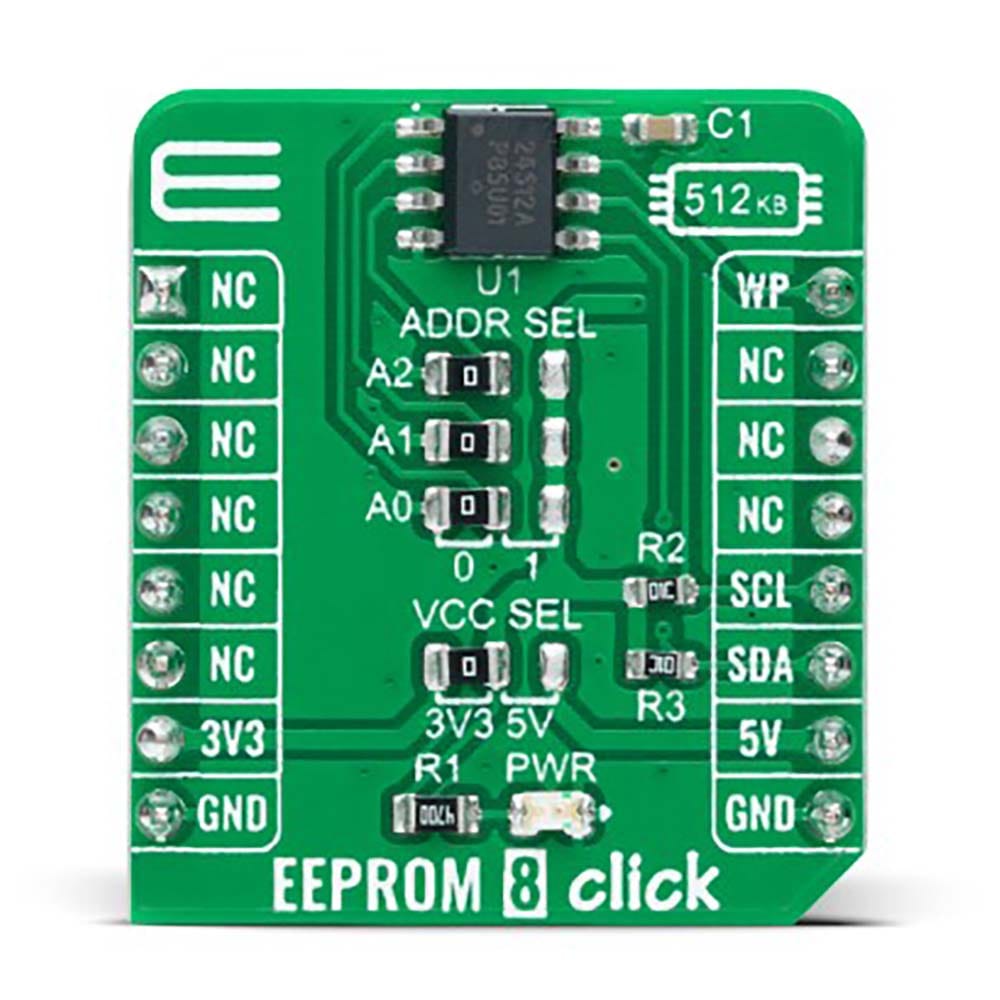
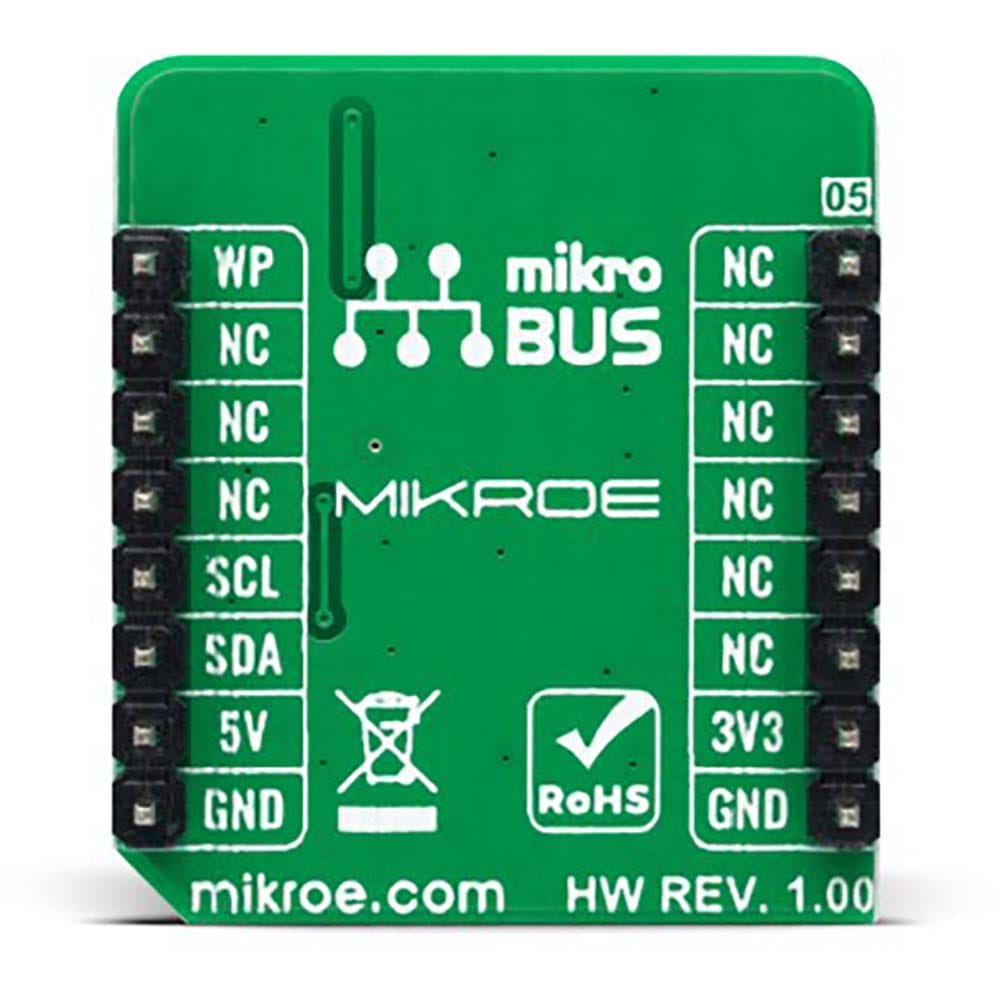
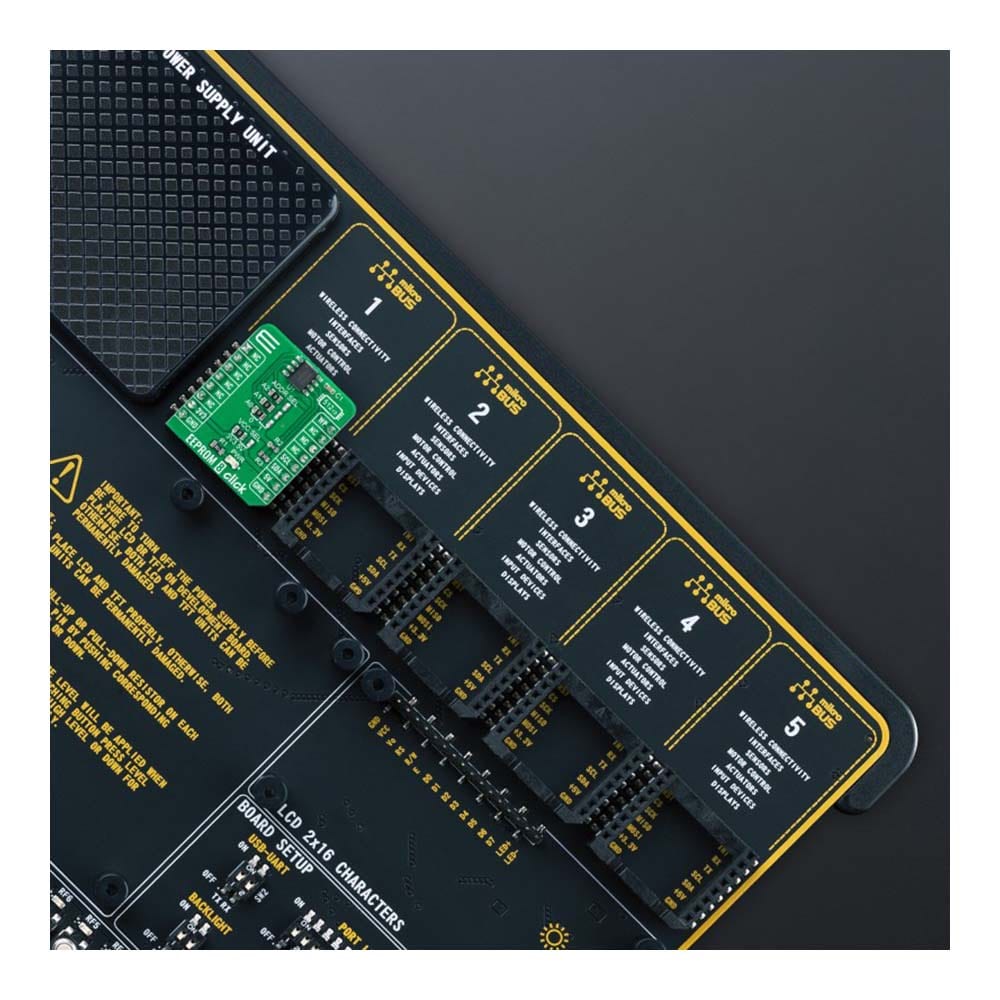
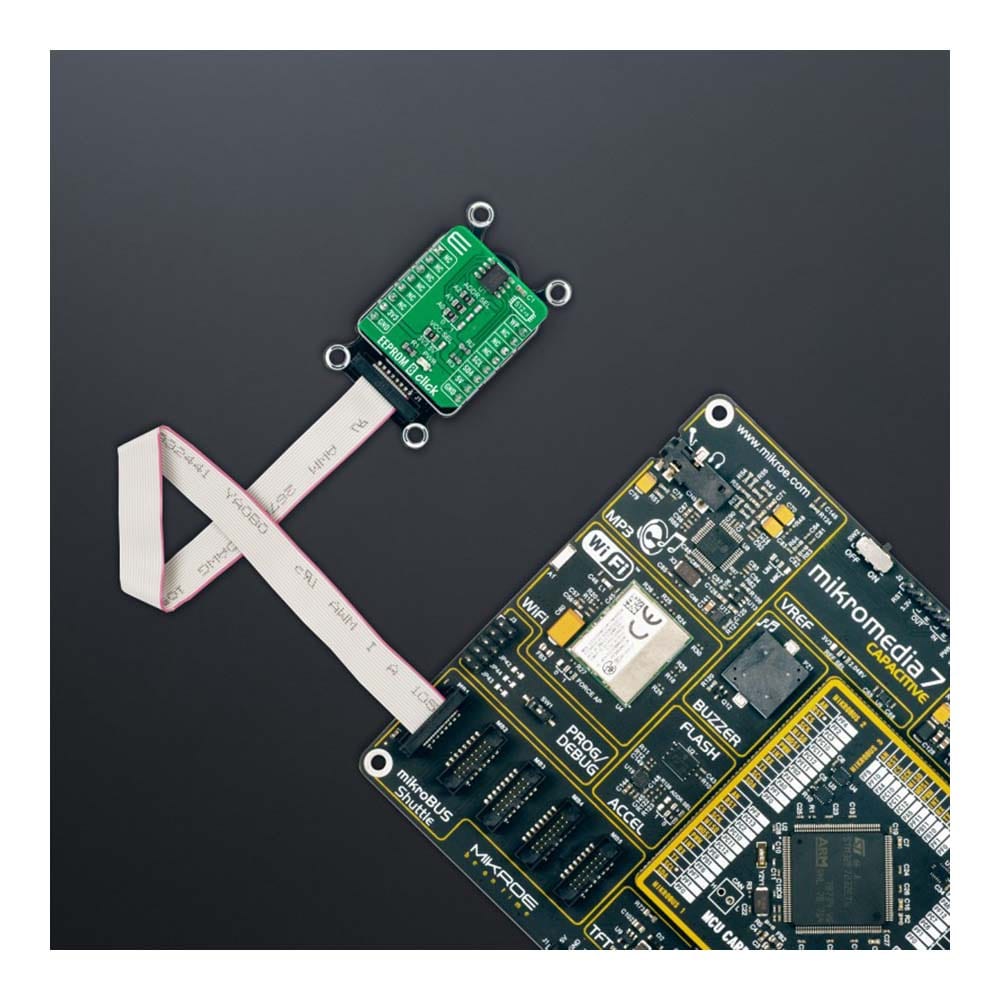
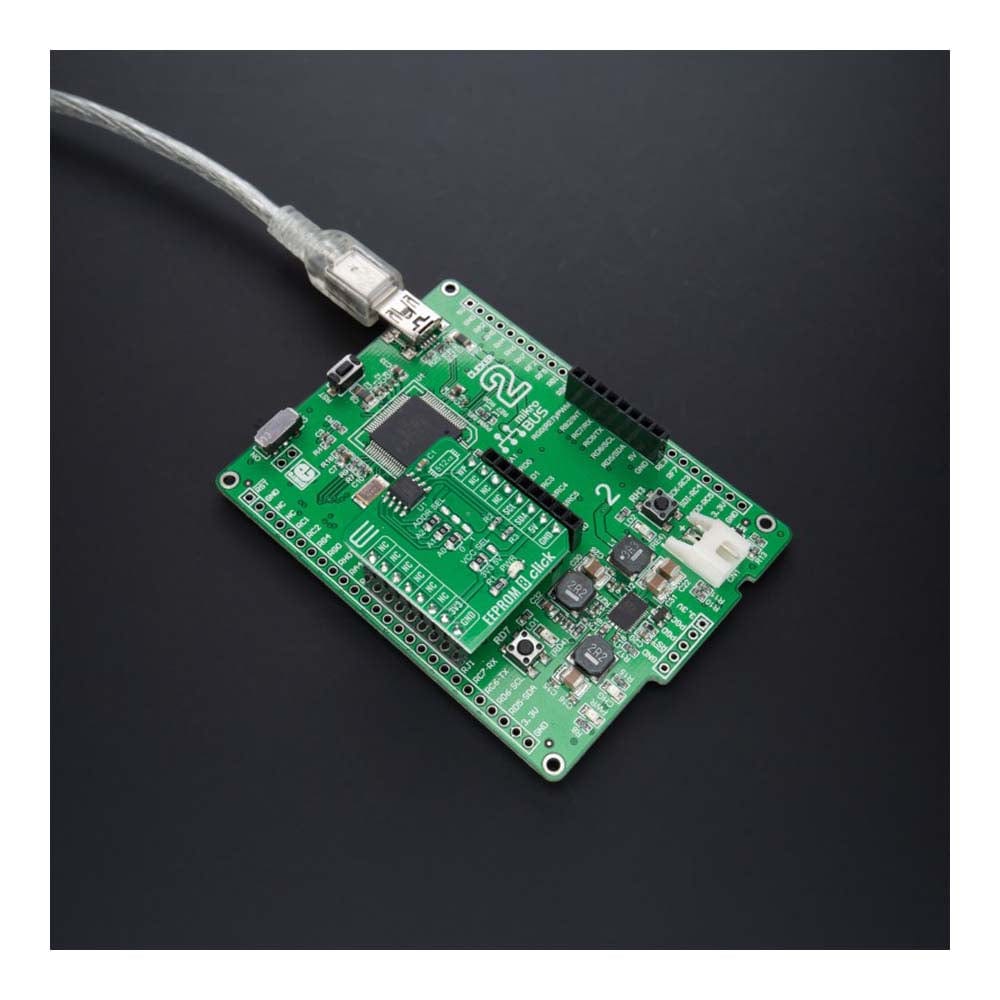
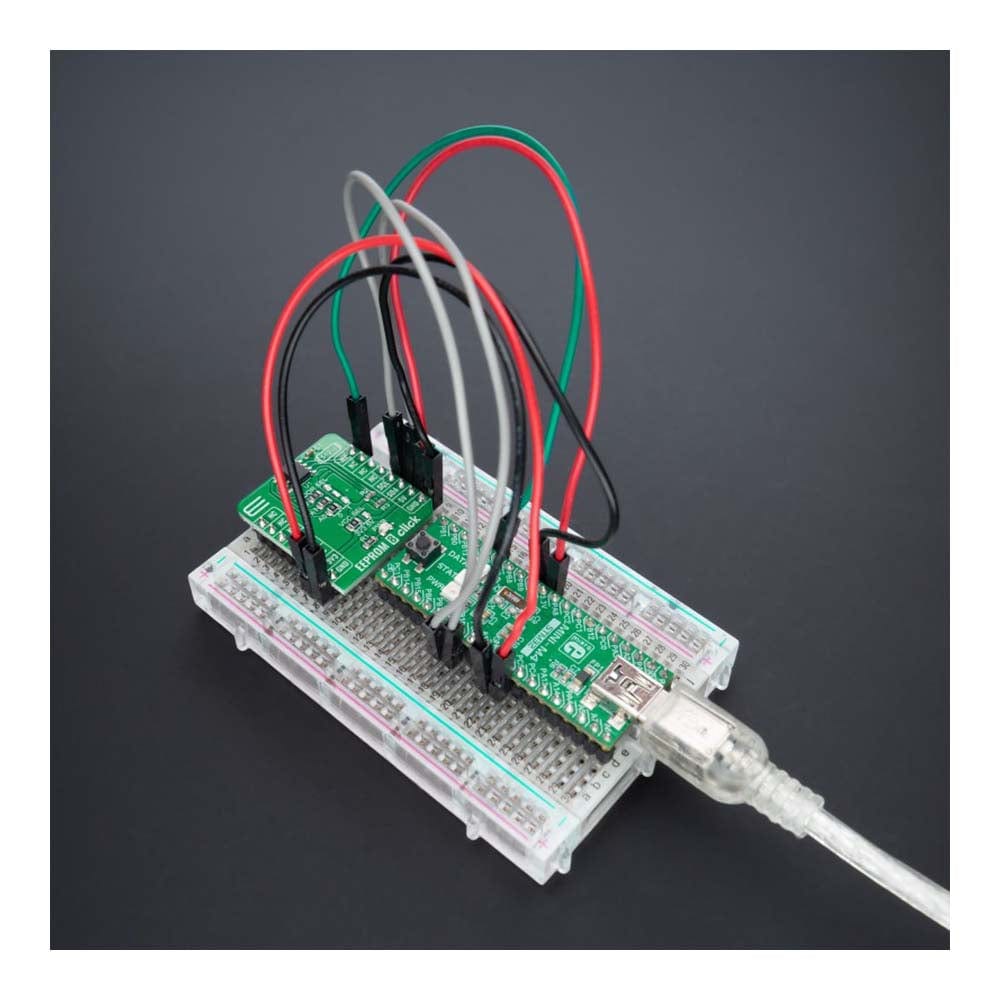
Key Features
Overview
The EEPROM 8 Click Board™ is a compact add-on board that contains a highly reliable nonvolatile memory solution. This board features the CAV24C512, a 512-Kb electrically erasable programmable memory with enhanced hardware write protection for entire memory from ON Semiconductor. Internally organized as 65,536 words of 8 bits each, the CAV24C512 comes up with the compatible I2C serial interface. The CAV24C512 combines unprecedented data storage with excellent energy efficiency. It lasts one million full-memory read/write/erase cycles with more than 100 years of data retention. This Click board™ is suitable for consumer and industrial applications where dependable nonvolatile memory storage is essential.
The EEPROM 8 Click Board™ is supported by a mikroSDK compliant library, which includes functions that simplify software development. This Click board™ comes as a fully tested product, ready to be used on a system equipped with the mikroBUS™ socket.
Downloads
How Does The EEPROM 8 Click Board™ Work?
The EEPROM 8 Click Board™ as its foundation uses the CAV24C512, a 512-Kb EEPROM with an I2C interface and Write Protection Mode from ON Semiconductor. The CAV24C512 is organized as 65,536 words of 8 bits each and benefits from a wide power supply range and 100 years of data retention combining their unprecedented data storage with excellent energy efficiency. It is highly reliable, lasting one million full-memory read/write/erase cycles. On-chip Error Correction Code (ECC) makes this Click board™ suitable for high-reliability applications where dependable nonvolatile memory storage is essential.
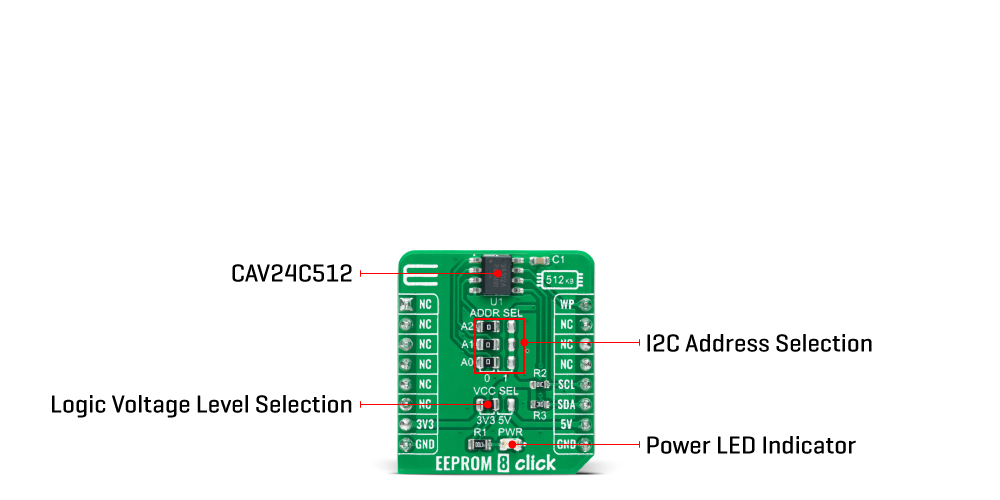
The EEPROM 8 Click Board™ communicates with MCU using the standard I2C 2-Wire interface that supports Standard (100 kHz), Fast (400 kHz), and Fast-Plus (1MHz) modes of operation. The CAV24C512 has a 7-bit slave address with the first five MSBs fixed to 1010. The address pins A0, A1, and A2, are programmed by the user and determine the value of the last three LSBs of the slave address, which can be selected by positioning onboard SMD jumpers labelled as ADDR SEL to an appropriate position marked as 0 or 1.
On the other side, the configurable Write Protection function, labelled as WP routed to the PWM pin of the mikroBUS™ socket, allows the user to freeze the entire memory area, thus protecting it from Write instructions.
The EEPROM 8 Click Board™ can operate with both 3.3V and 5V logic voltage levels selected via the VCC SEL jumper. This way, it is allowed for both 3.3V and 5V capable MCUs to use the communication lines properly. However, the Click board™ comes equipped with a library that contains easy-to-use functions and an example code that can be used, as a reference, for further development.
SPECIFICATIONS
| Type | EEPROM |
| Applications | The EEPROM 8 Click Board™ can be used for consumer and industrial applications where dependable nonvolatile memory storage is essential |
| On-board modules | CAV24C512 - 512-Kb electrically erasable programmable memory from ON Semiconductor |
| Key Features | Low power consumption, write protection, more than million read/write/erase cycles, more than 100 years of data retention, high reliability, high density, and more. |
| Interface | I2C |
| Compatibility | mikroBUS |
| Click board size | S (28.6 x 25.4 mm) |
| Input Voltage | 3.3V or 5V |
PINOUT DIAGRAM
This table shows how the pinout of the EEPROM 8 Click Board™ corresponds to the pinout on the mikroBUS™ socket (the latter shown in the two middle columns).
| Notes | Pin |  |
Pin | Notes | |||
|---|---|---|---|---|---|---|---|
| NC | 1 | AN | PWM | 16 | WP | Write Protect | |
| NC | 2 | RST | INT | 15 | NC | ||
| NC | 3 | CS | RX | 14 | NC | ||
| NC | 4 | SCK | TX | 13 | NC | ||
| NC | 5 | MISO | SCL | 12 | SCL | I2C Clock | |
| NC | 6 | MOSI | SDA | 11 | SDA | I2C Data | |
| Power Supply | 3.3V | 7 | 3.3V | 5V | 10 | 5V | Power Supply |
| Ground | GND | 8 | GND | GND | 9 | GND | Ground |
ONBOARD SETTINGS AND INDICATORS
| Label | Name | Default | Description |
|---|---|---|---|
| LD1 | PWR | - | Power LED Indicator |
| JP1 | VCC SEL | Left | Logic Level Voltage Selection 3V3/5V: Left position 3V3, Right position 5V |
| JP2-JP4 | ADDR SEL | Left | I2C Address Selection 0/1: Left position 0, Right position 1 |
EEPROM 8 CLICK ELECTRICAL SPECIFICATIONS
| Description | Min | Typ | Max | Unit |
|---|---|---|---|---|
| Supply Voltage | - | 3.3 | - | V |
| Memory Size | - | - | 512 | Kb |
| Endurance | 1.000.000 | - | - | Cycles |
| Data Retention | 100 | - | - | Years |
| Operating Temperature Range | -40 | +25 | +120 | °C |
| General Information | |
|---|---|
Part Number (SKU) |
MIKROE-5073
|
Manufacturer |
|
| Physical and Mechanical | |
Weight |
0.02 kg
|
| Other | |
Country of Origin |
|
HS Code Customs Tariff code
|
|
EAN |
8606027388866
|
Warranty |
|
Frequently Asked Questions
Have a Question?
Be the first to ask a question about this.

